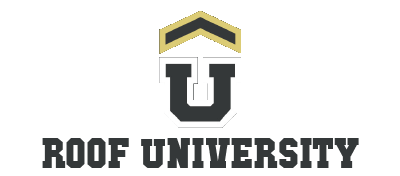What are the pros and cons of flat roofs?
Flat roofs are a practical and cost-effective roofing option widely used in both residential and commercial properties. While they are favored for their modern aesthetic and efficient use of space, they also come with unique challenges such as drainage issues and susceptibility to leaks. This guide explores the advantages and disadvantages of flat roofs, providing homeowners, roofers, and business owners with the knowledge to make informed decisions about their roofing choices.
Pros of Flat Roofs
Cost-Effectiveness
Flat roofs are significantly more affordable to install than pitched roofs due to their simpler design and reduced material requirements. Materials like EPDM and TPO, which are commonly used on flat roofs, cost less to produce and install compared to asphalt shingles or clay tiles. The labor costs are also lower because installation does not require intricate framing. This affordability makes flat roofs particularly appealing to small business owners and homeowners working within a tight budget.
Ease of Maintenance and Repairs
Flat roofs offer unparalleled accessibility, making maintenance straightforward and less costly. Cleaning debris or re-coating a PVC membrane can often be performed without specialized equipment. Regular maintenance, such as removing leaves to prevent clogged drains, is essential to address ponding water issues. Materials like Modified Bitumen are easy to repair, further reducing long-term costs.
Functional Usable Space
One of the most significant benefits of a flat roof is the opportunity to use the rooftop for additional purposes. In urban areas, flat roofs often double as rooftop gardens or terraces, adding valuable outdoor space. For businesses, these roofs can house HVAC systems, freeing up interior space. A commercial building in New York, for example, may install solar panels on its flat roof, leveraging the structure for energy efficiency and sustainability.
Modern Aesthetic Appeal
Flat roofs align with minimalist and contemporary architectural trends, enhancing the visual appeal of homes and businesses. This design is particularly common in modern commercial buildings and mid-century residential designs, such as those inspired by Frank Lloyd Wright’s architecture. Flat roofs also allow for clean lines that complement sleek façades and large windows.
Cons of Flat Roofs
Drainage Challenges
The nearly horizontal surface of a flat roof can lead to water pooling, which increases the risk of leaks and structural damage. Even with slight slopes, improper installation or blocked drains can exacerbate these issues. Installing roof drains or scuppers can help mitigate this risk. A built-up roofing system with adequate drainage design, for instance, can last significantly longer in areas with frequent rainfall.
Shorter Lifespan
Flat roofs generally have a shorter lifespan compared to pitched roofs. A TPO roof might last 20 years, whereas a traditional asphalt shingle roof can endure for 30 years or more. However, advanced materials like EPDM can extend the life expectancy of a flat roof when properly maintained. Material selection is crucial for long-term durability.
Limited Insulation Options
Flat roofs offer less space for insulation, potentially affecting a building’s energy efficiency. In colder climates, limited insulation can lead to higher heating costs. However, newer materials like reflective TPO and PVC membranes can improve thermal performance, mitigating some of these challenges. Businesses in energy-conscious states like California often opt for these energy-efficient options to comply with local building codes.
Prone to Leaks
Leaks are a common concern for flat roofs, especially when flashing or seams are improperly installed. Cracks in the parapet wall or around roof penetrations like vents and HVAC units can allow water to infiltrate the structure. Applying roof coatings, such as elastomeric coatings, can seal vulnerable areas and extend the life of the roof.
Flat Roof Materials and Their Impact
Popular Flat Roofing Materials
EPDM (Rubber Membranes) is durable and cost-effective, suitable for both residential and commercial properties. TPO is known for energy efficiency and reflective properties, making it ideal for sunny climates. PVC offers chemical resistance and flexibility, often used in industrial applications. Modified Bitumen combines traditional asphalt with polymers for enhanced performance. Built-up roofing provides multi-layered strength and durability, commonly used in older commercial buildings.
Factors in Material Selection
Climate and budget play a significant role in choosing flat roof materials. A homeowner in Arizona might prioritize TPO for its UV resistance, while a business in Chicago could opt for built-up roofing for its durability in heavy snow.
Flat Roof Maintenance Tips
Regular Inspections
Flat roofs should be inspected twice a year and after severe weather. A spring inspection can reveal winter damage, such as cracks in the membrane or ponding water, which should be promptly addressed.
Cleaning and Debris Removal
Keeping drains and gutters clear of leaves and debris prevents water accumulation. Businesses with rooftop gardens must also ensure that plants are not obstructing drainage systems.
Preventive Repairs
Addressing small issues like minor cracks or worn flashing can prevent costly repairs later. Sealing seams with specialized adhesive prolongs the life of Modified Bitumen roofs.
Advanced Maintenance Options
Applying roof coatings, such as silicone or elastomeric coatings, enhances waterproofing and thermal performance. These coatings are particularly beneficial for aging roofs, extending their service life.
Choosing Flat Roofs for Your Home or Business
Ideal Scenarios for Flat Roofs
Flat roofs are ideal for modern architectural styles, industrial buildings, and urban settings where maximizing space is crucial.
Weighing Pros and Cons
While flat roofs offer affordability and versatility, factors like climate and intended use should guide decision-making. Flat roofs may not be suitable for areas with heavy snowfall without proper reinforcement.
Expert Consultation
Hiring certified contractors ensures proper installation and maintenance. Asking about warranties, material options, and installation techniques can help homeowners and business owners make informed decisions.
Conclusion
Flat roofs present a blend of advantages and challenges, making them a viable option for many homeowners and business owners. They offer cost savings, functionality, and a modern aesthetic, but require diligent maintenance and material selection to address their inherent vulnerabilities. By understanding the unique benefits and potential issues of flat roofs, property owners can make choices that align with their needs and long-term goals. Consulting roofing professionals and investing in high-quality materials ensures durability and peace of mind.
For more insights into flat roofs, contact Roofing University or explore our comprehensive resources on roofing materials and maintenance.
Parks
Matt is Five Points Roofing's VP of Business Development, directly in charge of company growth and building a true contracting brand that is trusted by millions of homeowners. It’s not all business for Matt though, being 6’5”, he’s an avid amateur beach volleyball player and golfer. Competition is his thing. Happily married to his wife Laura, they also have a giant 72 pound ex-racing greyhound that’ll run laps around you.
Roof University is the place if you're a roofer, property owner, or insurance adjuster.
